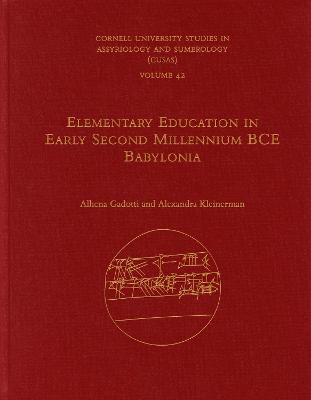CUSAS
4 primary works • 5 total works
Book 3
Book 4
Book 6
Book 41
This volume presents critical editions of tablets from the Early Dynastic, Sargonic, Ur III, Old Babylonian, and Middle Babylonian periods, housed in the Jawad Adra Cuneiform Collection in the Nabu Museum in El Heri, Lebanon. Bringing together a wide range of administrative, literary, historical, and lexical texts, From Mesopotamia...
Read moreThis volume presents critical editions of tablets from the Early Dynastic, Sargonic, Ur III, Old Babylonian, and Middle Babylonian periods, housed in the Jawad Adra Cuneiform Collection in the Nabu Museum in El Heri, Lebanon. Bringing together a wide range of administrative, literary, historical, and lexical texts, From Mesopotamia to Lebanon is a valuable survey of representative documents from the third and second millennia BCE in Mesopotamia.
Culled from the most significant collection of cuneiform tablets in Lebanon, the documents published here mainly derive from southern Iraq. Despite a wide chronological span, internal evidence indicates that they likely originate from various sites in two main areas: the first close to the ancient bank of the Tigris River, in the ancient cities of Adab, Irisaĝrig, and Umma and their environs; the second along the bank of the Euphrates River, in and around the cities of Isin and Shuruppak. The presence of school and literary tablets within the archival group suggests that one or more of these sites contained a scribal school. Taken together, the texts of the Adra Collection cover one and a half millennia (2600–1100 BCE), from the early period of the Sumerian city-states to the time when the region was ruled successively by the kings of Akkad, followed by the kingdoms of Ur, Isin, Larsa, and, finally, Babylon.
The two editors and six contributors represent an international group of scholars who provide critical editions of texts in their respective areas of expertise. In addition to the editors, the contributors to this volume are Alhena Gadotti, Alexandra Kleinerman, Camille Lecompte, Nordine Ouraghi, Jacques Quillien, and Wilfred van Soldt.
Elementary Education in Early Second Millennium BCE Babylonia
by Alhena Gadotti and Alexandra Kleinerman
In this volume, Alhena Gadotti and Alexandra Kleinerman investigate how Akkadian speakers learned Sumerian during the Old Babylonian period in areas outside major cities.
Despite the fact that it was a dead language at the time, Sumerian was considered a crucial part of scribal training due to its...
Read moreIn this volume, Alhena Gadotti and Alexandra Kleinerman investigate how Akkadian speakers learned Sumerian during the Old Babylonian period in areas outside major cities.
Despite the fact that it was a dead language at the time, Sumerian was considered a crucial part of scribal training due to its cultural importance. This book provides transliterations and translations of 715 cuneiform scribal school exercise texts from the Jonathan and Jeanette Rosen Ancient Near Eastern Studies Collection at Cornell University. These tablets, consisting mainly of lexical texts, illustrate the process of elementary foreign-language training at scribal schools during the Old Babylonian period. Although the tablets are all without provenance, discrepancies between these texts and those from other sites, such as Nippur and Ur, strongly suggest that the texts published here do not come from a previously studied location. Comparing these tablets with previously published documents, Gadotti and Kleinerman argue that elementary education in Mesopotamia was relatively standardized and that knowledge of cuneiform writing was more widespread than previously assumed.
By refining our understanding of education in southern Mesopotamia, this volume elucidates more fully the pedagogical underpinnings of the world’s first curriculum devised to teach a dead language. As a text edition, it will make these important documents accessible to Assyriologists and Sumerologists for future study.


